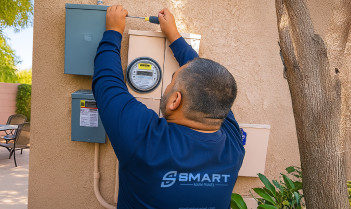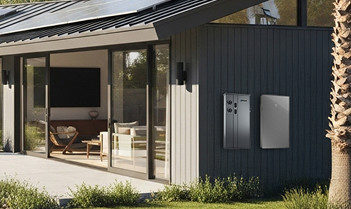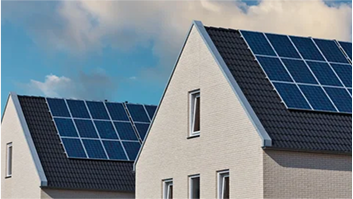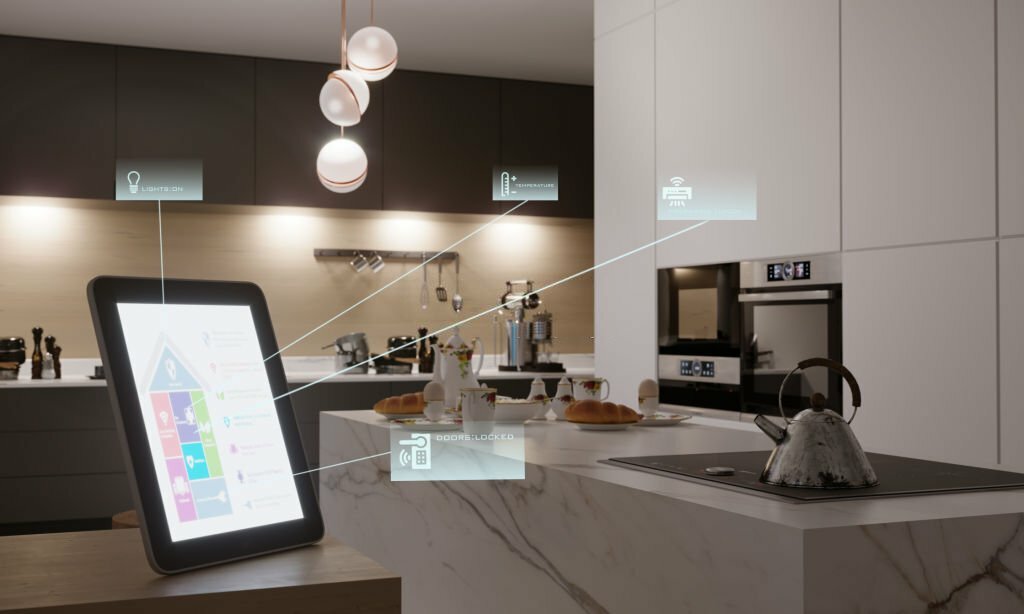
Date
Smart Home Control Panels: iPad, Alexa, Google, and Android
- iPad Smart Home Control Panel
- Alexa Control Panel
- Google Home Control Panel
- Android Smart Home Control Panel
iPad Smart Home Control Panel

Features:
- Centralized Control: Access and manage all your smart devices through one central interface, including dimming lights, adjusting thermostat, locking doors or starting your coffeemaker – all from one button press!
- Customizable Dashboard: Tailor your control panel to fit seamlessly with your lifestyle by organizing and prioritizing your most-used devices and settings for quick and effortless access.
- Scene Settings: Create customized settings to suit various occasions with just a tap – be it movie night, dinner with the family, or work productivity.
- Remote Access: Take control of your home even when you’re not there with remote access from anywhere with internet connectivity, whether at work or vacation. Stay in the know and in charge without leaving home!
- Voice Integration: Enjoy hands-free convenience when managing your home with Siri, Alexa or Google Assistant voice assistants for effortless home control via voice commands.
Security and Privacy:
At Home Automation Systems, your security and privacy is of utmost importance. Our control panel uses cutting-edge encryption and security protocols to keep your data safe while keeping your home secure.
Compatibility:
Integrates seamlessly with an array of smart home devices and brands, ensuring compatibility and ease-of-use.
Getting Started:
- Installation: Download the app and follow its easy installation instructions to connect all of your smart devices to the control panel.
- Customization: Tailor your dashboard to suit your lifestyle and personal tastes by organizing devices for quick and effortless access.
- Explore: Take advantage of all the features and possibilities this control panel provides by making use of creating scenes, automating processes, and making your home truly smart.
Privacy Concerns: Using a smart home control panel, such as an iPad, to manage your smart devices can be a convenient way to automate your home and make your life easier. However, it is important to be aware of the potential privacy concerns associated with using this technology.
One concern is that smart home devices can collect a lot of data about your daily activities. For example, smart thermostats can track when you are home and when you are away, smart lights can track when you turn them on and off, and smart cameras can track who comes and goes from your home. This data can be used by smart home companies to target you with advertising, or it could be sold to third-party companies without your knowledge or consent.
Another concern is that smart home devices can be vulnerable to hacking. If a hacker gains access to your smart home network, they could potentially control your devices without your permission. This could pose a serious security risk, as hackers could unlock your doors, turn off your lights, or even adjust your thermostat to make your home uncomfortable.
Digital Assistant: You can use a digital assistant, such as Siri or Google Assistant, to control your smart home devices with your voice. This can be a convenient way to control your home without having to lift a finger. However, it is important to note that digital assistants also collect a lot of data about your voice and your interactions with them. This data can be used by the companies that make digital assistants to improve their products and services, but it could also be used for other purposes, such as targeting you with advertising.
Smart Home Hub: A smart home hub is a device that connects all of your smart devices together and allows you to control them from a single app or interface. Smart home hubs can make it easier to manage your smart devices, but they can also introduce new privacy concerns.
One concern is that smart home hubs can collect a lot of data about your smart devices. This data includes information about the devices themselves, such as their type, model number, and serial number. It can also include information about how you are using your devices, such as when you turn them on and off and what settings you use. This data can be used by smart home companies to improve their products and services, but it could also be used for other purposes, such as targeting you with advertising or selling it to third-party companies without your knowledge or consent.
Tips for Protecting Your Privacy

There are a number of things you can do to protect your privacy when using a smart home control panel, digital assistant, and smart home hub.
- Do your research. Before you buy any smart home devices, research the company that makes them and their privacy policies. Choose devices from companies that have a good reputation and that are committed to protecting your privacy.
- Keep your devices and software up to date. Software updates often include security patches that can help to protect your devices from hacking.
- Use strong passwords and enable two-factor authentication. This will help to make it more difficult for hackers to gain access to your smart home devices and accounts.
- Be careful about what information you share with smart home companies. You should only share information that is absolutely necessary for the devices to work.
- Be aware of the privacy settings on your smart home devices and apps. Review these settings carefully and make sure that they are configured to protect your privacy.
Bring the future of smart living home with the ultimate control panel for connected homes!
Alexa Control Panel
Welcome to the heart of your smart home: the Alexa Control Panel. Streamline home management while taking advantage of voice-activated control for all connected devices.
Features:
- Voice-Powered Control: Experience home life like never before by asking Alexa to dim the lights, adjust temperature or lock doors – or even brew you coffee – all without moving an inch!
- Centralized Command: Use Alexa as your personal assistant and manage all of your compatible smart devices seamlessly by simply speaking out a command to her. Enjoy seamless control of multiple devices and systems effortlessly!
- Customizable Experience: Tailor the Alexa experience to meet your specific preferences by organizing devices you use most and setting schedules or routines for certain times or activities throughout the day or specific activities.
- Smart Home Integration: Alexa serves as the hub, connecting multiple smart home devices and brands seamlessly together to form one system that is compatible with them all.
- Remote Accessibility: Stay in control, even when away. Manage your home from any internet-enabled location – whether at work, traveling, or simply enjoying a day off.
Privacy and Security:
Alexa puts your privacy and security first. Using robust measures, Alexa employs safeguards to keep your data safe while providing a seamless interaction with all smart devices.
Getting Started:
- Set Up: Get going quickly by connecting Alexa-enabled devices to the Alexa Control Panel in just minutes – an effortless experience that gets you up and running in no time at all!
- Customization: Give your control panel its own signature look by organizing devices and creating routines tailored to your daily life.
- Exploration: Explore the realm of voice-controlled home management. Experiment with creating custom routines, learning new skills, and harnessing Alexa to realize its full potential within your smart home.
The Alexa Control Panel is a great way to manage your smart home devices with Amazon Alexa. You can use the control panel to turn on and off lights, adjust thermostats, lock and unlock doors, and more. You can also use the control panel to create routines and groups, which can help you to automate your smart home.
Smart Plugs: Smart plugs are a great way to add smart features to any device in your home. You can use smart plugs to control lamps, fans, heaters, and other devices. To use a smart plug with the Alexa Control Panel, simply plug the smart plug into an outlet and then plug your device into the smart plug. Once the smart plug is set up, you can use the Alexa Control Panel to turn your device on and off with your voice.
Companion App: The Alexa Control Panel also has a companion app that you can use to manage your smart home devices on your smartphone or tablet. The companion app has all of the same features as the control panel, but it is also more portable. You can use the companion app to control your smart home devices from anywhere in the world, as long as you have an internet connection.
Voice Control: One of the best things about the Alexa Control Panel is that you can use your voice to control your smart home devices. To use voice control, simply say “Alexa” followed by the command that you want to give. For example, you could say “Alexa, turn on the living room lights” or “Alexa, set the thermostat to 72 degrees.”
Voice Assistant: Alexa is a voice assistant that can do more than just control your smart home devices. You can also use Alexa to ask questions, get news and weather updates, play music, and more. To use Alexa as a voice assistant, simply say “Alexa” followed by your question or request. For example, you could say “Alexa, what is the weather forecast for today?” or “Alexa, play my favorite playlist.”
Voice Recordings: Alexa keeps recordings of your voice interactions with her. These recordings are used to improve Alexa’s accuracy and to help Amazon to develop new features. You can review your voice recordings and delete them if you want. To do this, go to the Alexa app and tap on the “More” menu in the bottom right corner of the screen. Then, tap on “Settings” and then “History.”
Your home under your command; experience next-level smart living with the Alexa Control Panel!
Google Home Control Panel
The Google Home control panel provides an easy and straightforward way to manage smart home devices from a phone, tablet, or other device. With one central view for all compatible devices you can turn them on or off quickly as needed while making settings adjustments or creating routines routinely. Among its many features it also enables automatic scheduling for devices connected through wifi network connectivity and offers personalized notifications about any potential security threats to the network itself.
Features
The Google Home control panel includes the following features:
- View and control all of your compatible smart home devices: The control panel shows you a list of all of the smart home devices that are connected to your Google Home account. You can tap on any device to view its current status and control it.
- Create Routines: Routines allow you to easily group together multiple actions and trigger them with one command, for example creating “Good morning” as a routine that turns on lights, starts music playing, and adjusts the thermostat temperature.
- Favorites: By designating your most frequently-used devices as favorites, they will always remain at the top of the control panel.
- Customize Your Control Panel: You can easily personalize your control panel to display devices and information most important to you, rearrange their order or add or remove devices as you see fit.
Example
Here is an example of how you could use the Google Home control panel:
- Wake up in the morning and say “Hey Google, good morning.”
- Your Google Home devices will start playing your favorite music, turn on the lights, and set the temperature on your thermostat to your preferred setting.
- Get ready for work and then head out the door.
- Say “Hey Google, goodbye.”
- Your Google Home devices will turn off the lights and lock the doors.
Google Maps: You can use Google Maps with the Google Home Control Panel to get directions, find places, and check traffic conditions. To do this, simply say “Hey Google, open Google Maps” or “Hey Google, give me directions to the nearest coffee shop.” You can also use Google Maps to control smart devices in your home. For example, you could say “Hey Google, turn on the lights in the living room when I arrive home.”
Google Cloud: You can use Google Cloud with the Google Home Control Panel to store and access your data, run applications, and build machine learning models. To do this, you will need to create a Google Cloud account and then connect your Google Home Control Panel to your Google Cloud account. Once your accounts are connected, you can use Google Cloud to control smart devices in your home, automate tasks, and more.
Google Search: You can use Google Search with the Google Home Control Panel to find information on the web, ask questions, and get help with tasks. To do this, simply say “Hey Google, search the web for [query]” or “Hey Google, what is the capital of France?” You can also use Google Search to control smart devices in your home. For example, you could say “Hey Google, turn on the TV” or “Hey Google, set the thermostat to 72 degrees.”
Google Workspace: You can use Google Workspace with the Google Home Control Panel to manage your work email, calendar, and contacts. To do this, you will need to create a Google Workspace account and then connect your Google Home Control Panel to your Google Workspace account. Once your accounts are connected, you can use Google Workspace to control smart devices in your home, automate tasks, and more.
The Google Home control panel is a powerful tool that can help you to manage your smart home devices more easily. It is a great way to save time and energy, and to make your home more convenient and secure.
Android Smart Home Control Panel
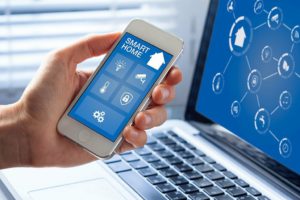
The Android Smart Home Control Panel is a central hub for managing all of your smart home devices from an Android phone or tablet, providing one centralized interface across brands and models of smart home devices. It gives you complete control over them all from one convenient place. Incorporating features such as automatic device updates (using Wi-Fi network connectivity), auto power on/off control, auto device discovery etc, the Android Smart Home Control Panel makes life much simpler!
Features
The Android Smart Home Control Panel includes the following features:
- Support for a wide range of smart home devices: The control panel supports a wide range of smart home devices, including lights, thermostats, locks, cameras, and more.
- Easy-to-Use Interface: The control panel features an easy and intuitive user interface that makes controlling devices straightforward for even those without much technical expertise.
- Routines: With Routines you can automate repetitive tasks, such as turning on lights or setting thermostats when arriving home.
- Notifications: Receive notifications whenever your devices change state, such as when a door opens or motion sensors are triggered.
- Remote Access: Access your control panel remotely to check on and manage devices even when you aren’t there (such as when your children come home late from school or when someone calls after being away for too long).
Example
Here is an example of how you could use the Android Smart Home Control Panel:
- You arrive home from work and open the control panel.
- You tap a button to turn on the lights and set the thermostat to a comfortable temperature.
- You receive a notification that the motion sensor in your living room has been triggered. You check the camera feed and see that it is just your cat.
- You are going to bed and want to make sure that your home is secure. You tap a button to lock all of your doors and close all of your windows.
The Android Smart Home Control Panel is a versatile tool designed to assist in controlling all your smart home devices efficiently and seamlessly, making your home more convenient, secure and energy efficient. Furthermore, its advanced features enable it to provide further benefits.
Additional features
As well as its core features listed above, an Android Smart Home Control Panel could include additional functions:
- Grouping: Devices can be organized into rooms or zones so they can all be managed with just a tap of your finger.
- Scenes: You could create scenes to set the right atmosphere for any activity, such as “Movie Night” that dims lights and turns on TV.
- Energy Monitoring: With its control panel you could keep an eye on how much energy is being consumed while receiving advice on how you could save energy in future.
- Insights: Your control panel could offer valuable insights into how you are using your smart home devices, including which are being utilized most frequently and which devices costing more money.
By adding these extra features, the Android Smart Home Control Panel could become even more valuable to homeowners.
What is a smart home control panel?
A smart home control panel acts as the central hub for controlling all the connected devices in your home. This can include lights, thermostats, locks, alarms, and more. Depending on the system you have, control panels can be physical touchscreens or applications on your phone or other devices.
How does Google Workspace integrate with smart home control panels?
Google Workspace itself doesnt directly integrate with smart home control panels. However, if your control panel supports services like Google Assistant or Google Home apps, you may use them to command your smart devices through voice commands or schedule routines.
How can I use my smart home control panel to manage my doors?
If you have a connected door lock or doorbell camera installed at your doors, you can use your smart home control panel to lockunlock doors remotely and monitor whos at the door from anywhere in your house.
What are some key features to look for when choosing a user interface for a Smart Home Control Panel?
Key features could include ease of navigation around the interface; compatibility with various brands of devices; capability to create routines (automated actions); support for voice commands via services like Alexa or Google Assistant; and customization options to suit personal preferences and needs.
Can I access my Smart Home Control Panel remotely?
Yes, most modern smart home systems allow remote access via mobile apps or web interfaces. This allows homeowners to monitor and manage their homes from anywhere they have internet access.
